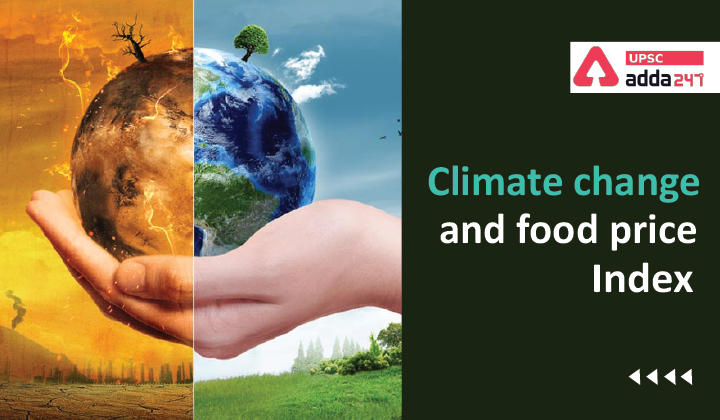Table of Contents
Climate Change and Food Price Rise: Relevance
- GS 3: Conservation, environmental pollution and degradation, environmental impact assessment.
Climate Change and Food Price Rise: Context
- India’s wholesale inflation rate in November 2021 was the highest in three decades. Moreover, what was more worrying was the fact that the price rise has been continuous and December 2021 was the ninth straight month of double-digit percentage increases in the WPI.
Climate Change and Food Price Rise: Key points
- WPI inflation is always a cause of concern as it can raise retail inflation.
- Experts have predict that the situation will remain the same through the end of this financial year, March 2022.
- Reason for December inflation: Reduction in taxes on fuel by the Government.
Food inflation in India
- Moreover, food inflation has been a driver of overall growth in inflation and the WPI peaked in November 2021 due to a surge in primary food inflation that hit a 13-month high.
- Also, prices of seasonal vegetables jumped unprecedentedly in many states due to extreme weather events.
Food inflation in the world
- Food and Agricultural Organization’s (FAO’s) Food Price Index showed that food prices were at a decade-high, with an average rise of 28 per cent over the previous year.
- And if we adjust for inflation, the average food prices in the first 11 months of 2021 were at the highest in 46 years.
- Reason: High cost of inputs, ongoing global pandemic and uncertain climatic conditions.
Climate change and food inflation
- RBI said that there were nine double-digit inflation episodes between 1956 and 2010, of which seven were caused by drought conditions.
- In the past six decades, there have been three major episodes of significantly high food prices globally: 1970s, 2007-08 and 2010-14.
- Reason: Weather shocks followed by factors such as increase in oil prices, trade policy interventions and biofuel consumption.
- The current episode seems to be entirely driven by weather anomalies.
- A similar situation caused the last high-price episode in 2019-2020.
- Reason: Rising prices of food items, particularly of vegetables, caused retail inflation to rise to a 68-month high in January 2020.
- RBI, in 2014, said that one of the traditional explanations for rising food prices has been the supply-side shocks related to weather either because of droughts or floods.
Key drivers of food inflation
- Wheat: The current global food inflation is driven predominantly by wheat, which reported price rise due to drought and high temperature in major producing countries.
- Russia, the world’s largest exporter of wheat, also harvested less and has now imposed a tax on wheat export to ensure ample stock for domestic consumption.
- Coffee: Unusual frosts in Brazil’s coffee bean producing areas in July 2021 have led to a production dip of around 10 per cent.
Impact of climate change on agriculture
- In 2012, Oxfam estimated that the average world market export price for wheat would rise by 120 per cent by 2030 compared with 2010; the figures for processed rice is 107 per cent and for maize is 177 per cent.
- One of the major area of concern is that by changing the rain and its distribution, climate change is altering the very axis of agriculture.



 TSPSC Group 1 Question Paper 2024, Downl...
TSPSC Group 1 Question Paper 2024, Downl...
 TSPSC Group 1 Answer key 2024 Out, Downl...
TSPSC Group 1 Answer key 2024 Out, Downl...
 UPSC Prelims 2024 Question Paper, Downlo...
UPSC Prelims 2024 Question Paper, Downlo...




